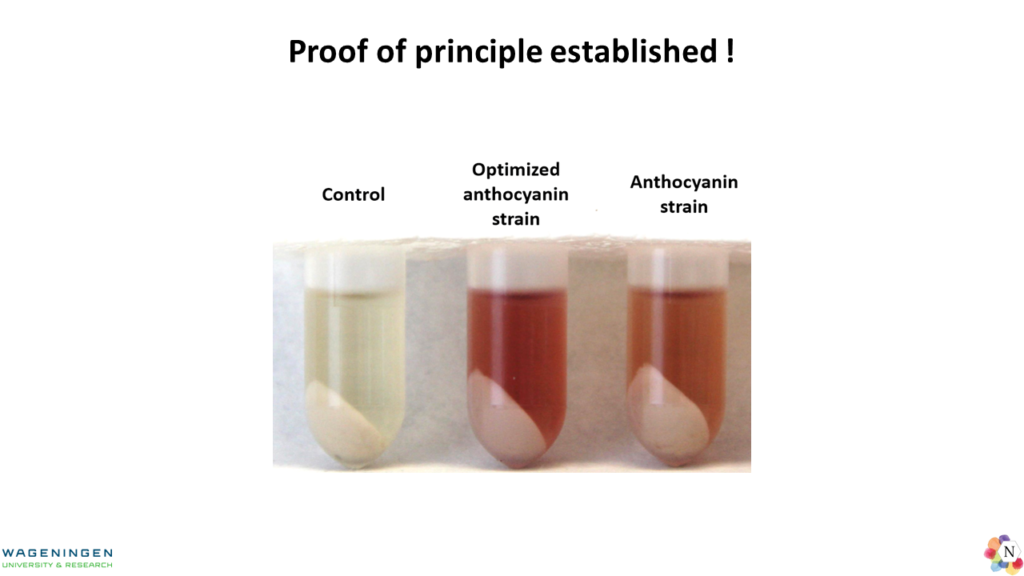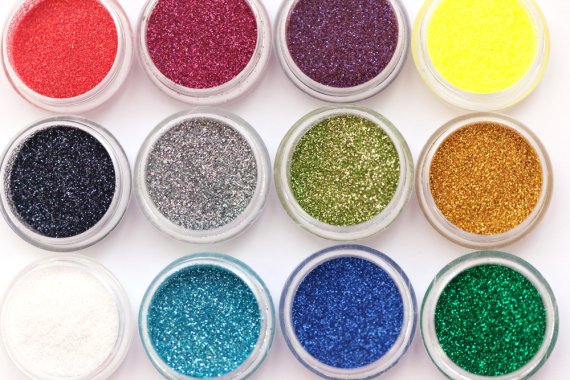© Shutterstock
‘With this grant money we can improve our technology and further explore the market’, says CEO Constantinos Patinios, PhD student Agrotechnology & Food Sciences. The Take-off grant is provided by Ministry of Economic Affairs and Climate and the Ministry of Education, Culture and Science.

Tubes with the yeasts. On the left, the normal yeast that does not produce a colour; on the right, the genetically modified yeast; and in the centre, the yeast that has been optimised to make a produce colour. © Constantinos Patinios
Patinios’ company explores methods to produce natural colourants in the laboratory. The food-industry has to completely eliminate all artificial colours by 2020 and replace them with natural colourants. These natural colourants are currently harvested from plants such as purple carrot or cabbage. Patinios: ‘Extraction of the colourants from the plants is very inefficient and sometime requires chemicals. Less than two percent of the plant material is actually converted to colourants. This means plants that could be used for human consumption are wasted and a lot of agricultural land is used.’ Another problem with these plant-derived natural colourants, is that they are not as stable. This means that they fade quickly, for example, and the products cannot be sold as a consequence.
That’s why Patinios and his colleagues developed a technique to produce these natural colourants in the lab, using genetically modified yeasts. As a starting material, he feeds the yeast sugar. Patinios: ‘Sugar cane uses six times less land than for example purple carrots and with our technology we can reduce the CO2 emissions by 30 fold and increase the conversion efficiency, by 30 fold as well, meaning less waste.’
The yeast produces anthocyanins, a natural colourant that is also present in plants like cabbage and sweet potatoes. Patinios: ‘When you harvest natural colourants directly from the plants it is often a mixture of different substances. The yeast produces a pure form, this is more stable and it is also easily customizable, because you can engineer the yeast to produce any anthocyanin compound you want.’ At the moment Patinios has proven that the technique works in the lab with small vials of 50 millilitres. ‘With this grant we have the opportunity to improve our technique, so we can try to upscale the process for commercial production.’
Initially, Patinios focussed on the food industry, but now he is not so sure that this has the greatest potential. ‘They like the concept. But the yeast we use is a genetically modified organism (GMO) and consumers don’t like that, even when the final product is completely natural. Now the food industry invests billions of dollars in trying to stabilize natural colourants they harvest from plants, instead of investing in sustainable alternatives. You can have great technology, but you cannot force consumers to buy your product.’
He therefore wants to explore other markets like cosmetics, the pet food industry or pharmaceuticals. The latter is interesting because anthocyanins also work as an antioxidant and could be used in supplement pills.
Additional reading:
Fermentation is hot
Brewing fruity light beers using a different kind of yeast
Yeast prolongs shelf life of strawberries

